
There are two ways of dealing with a setback. Either you cry about it and plunge to more sorrow or you rise up like a phoenix. Tata Motors certainly does not belong to the first group. Tata Motors launched Aria, an MPV with an appetite of an SUV in 2010. Despite it being an innovative crossover model, it failed to stir up the segment which is the domain of the Toyota Innova Crysta.
Tata Motors is leaving no stone unturned. Fast forward to 2017 and meet the Hexa. The new flaghip SUV of Tata Motors is based on the Aria. The Hexa's key dimensions such as wheelbase, length, width, even weight are more or less similar. The silhouette of the new flagship model also resembles the Aria. Despite all these similarities, Tata Motors claims the Hexa is an all new vehicle and comparing it with the Aria is pointless. That is a tall claim. We have test driven the Hexa to find out the truth.
Design and Styling
In terms of looks, we agree that the Hexa looks all new, thanks to the copious rework on the styling. Despite no accessories, the stock Hexa has proper SUV attributes such as the presence, butch face, muscular body panels, thanks to the Impact design language debuted with the Tiago hatchback. Tata says every panel on the Hexa has been redesigned and there is nothing shared with the Aria. By the way Hexa looks, it is true.
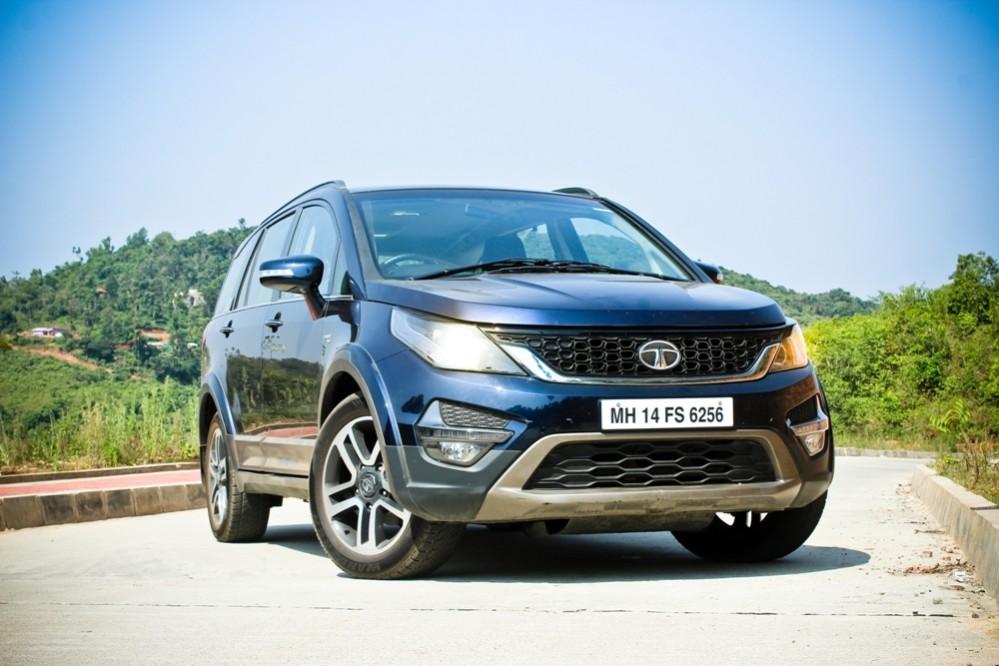
The 'humanity line' on the grille is bolder and more aggressive in the Hexa. The large mesh-type front grille is modern with black treatment. The projector headlamps with DRLs, wider honeycomb mesh on the lower air dam and clamshell bonnet make the Hexa look imposing.
The connection to the Aria is too obvious from the sides. A rugged plastic cladding and the 19-inch five-spoke, brushed metal alloy wheels add mass at the side view. The blacked-out pillars giving the impression of a 'floating' roof and band of chrome along the base of the windows adds freshness.
The 'Christmas tree' vertical tail lamps of the Aria have made ways to more contemporary horizontal units with LED elements. Thick chrome strip between tail lights, aggressive bumper with hexagonal exhaust tips and boomerang-shaped reflectors, and small integrated spoiler completely mask the Aria's design bits in the Hexa.
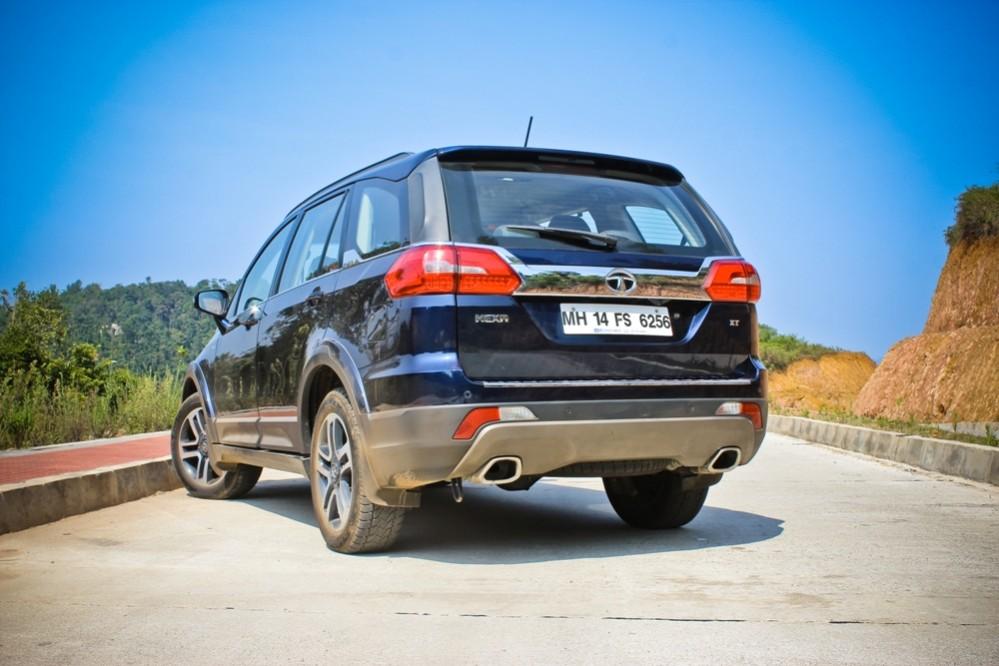
Overall, Tata Motors designers have succeeded in bringing the Hexa as a fresh model. Though the silhouette of the Hexa is identical to the Aria, brilliant additions and tweaks does give the Hexa a character of its own.
Interior and features
The sense of freshness is carried inside cabin of the Hexa with less traces of the Aria. The cabin is well laid out and it looks elegant with soft-touch plastic and all black inlay. Despite not going for fancy additions, the interior of the Hexa feels rich. The dashboard of the Hexa packs two gloveboxes. Revamped centre console houses a 5-inch touch screen infotainment system with an array of options including bluetooth and smartphone integration. The multi-functional steering wheel gets cruise control, audio and telephone controls, and is height adjustable.
The interior of the Hexa scores particularly in terms of space and comfort. The seats are not only well designed but also feel top notch in terms of their tactile feel. It gives enough back support and is well bolstered. My only complaint here is lack of under thigh support. A bit of length to the seats will make the journey more relaxing for a six footer like me.
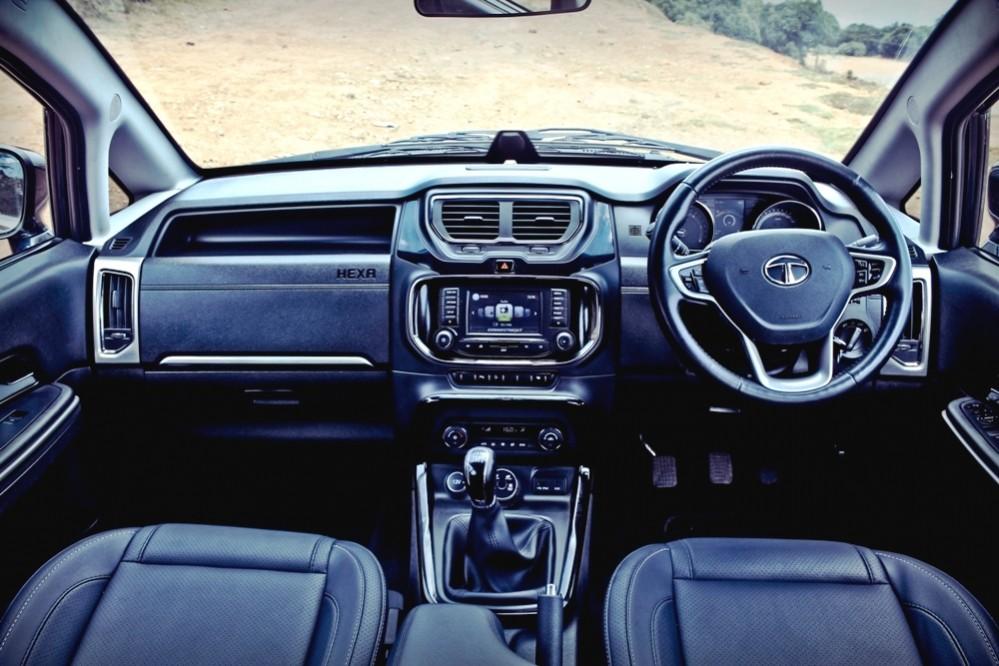
You will never complain for extra leg-, shoulder- and head room inside Hexa. The middle row has plenty of leg room even with the front seats pulled all the way back. The third row has decent amount of space but not as lavish as the other seats. Nonetheless, it is one of most usable third row seats in the business. The interior also offers B-pillar-mounted air-con vents aside from a floor-mounted console and there are manually operated sun-blinds. There are deep door pockets for bottles and knick-knacks as well.
Being the flagship model, the Hexa is loaded with equipment, and the 10-speaker JBL system is a highlight. The Hexa has 8-colour mood lighting. It packs with six airbags, ABS, ESP, traction control and hill descent control.
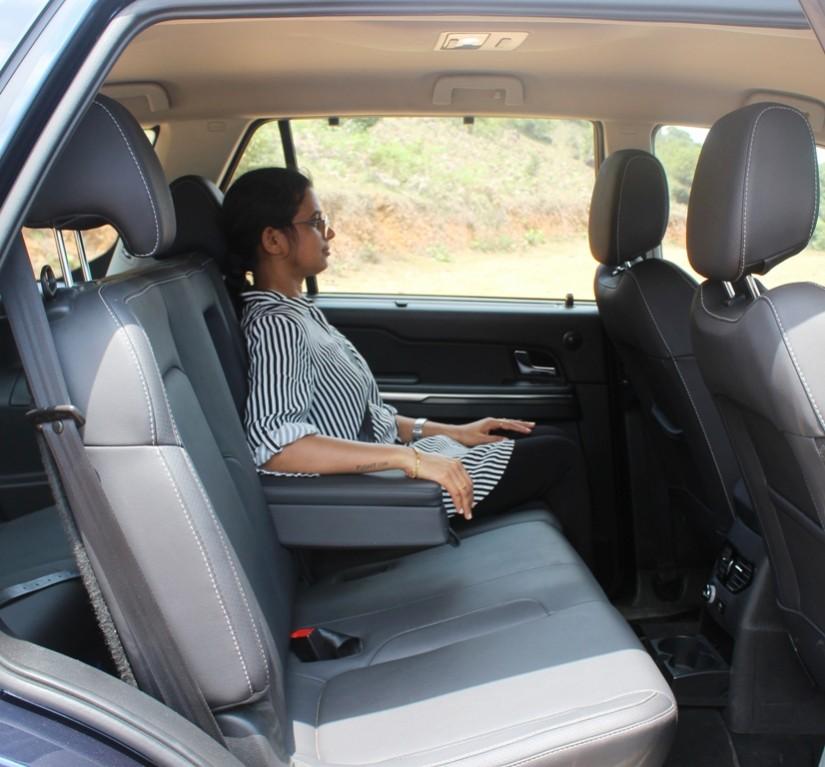
Engine and transmission
Hexa draws power from a 2.2-litre Varicor engine derived from the 2.2-litre unit seen in the Aria. Tata Motors says its engineers have reworked the block, head, intake and turbo systems of the mill to deliver higher power and torque density and greater levels of refinement. While the 2.2-litre Varicor 320 engine generates 148bhp and 320Nm of torque in the base variants of the Hexa, the same engine in remaining variants produces 154bhp and 400Nm of torque. A five-speed manual gearbox is offered in the base variant of Hexa, while the six-speed manual and six-speed automatic gearbox are offered in the other variants.

The Hexa comes with four drive modes — Auto, Comfort, Dynamic and Rough Road. The AWD system is a torque-on-demand unit which is primarily rear-wheel drive. When it senses slip torque is transferred to the front axle.
Drive and performance
We got our hand behind the wheels of manual transmission equipped, top-of-the-line XT variant. The Hexa has a considerable 2280kg kerb weight and that plays an important role in drive, especially when you start moving. The response from the engine is just adequate. Do not expect surge of power when you bury the throttle. The mill takes some time to respond. Once the turbo kicks in from around 2,000rpm, the motor pulls strongly and responds well to throttle inputs. The power-assisted steering wheel also weighs at good speed and the response is clinical.
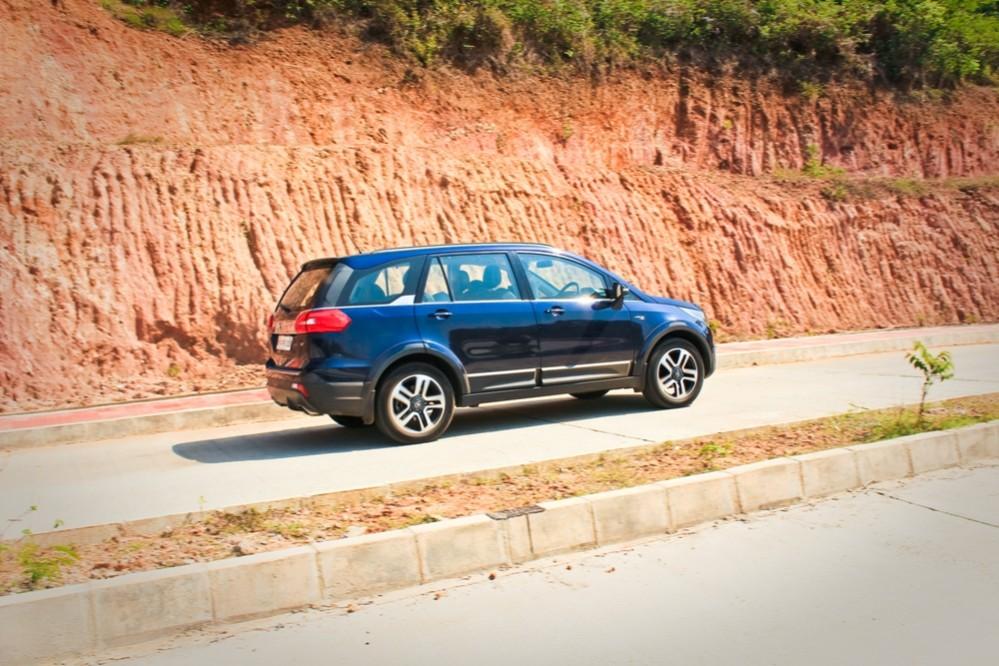
The weight of the car comes handy when cruising in high speeds. Despite in three digit speeds, the Hexa is planted and that will give the driver a lot of confidence. The 19-inch wheels need to be specially mentioned here. It has changed the way the vehicle drives in terms of overall handling. The Hexa is less vague in corners. Having said that, I felt the Hexa is just too large and heavy to push hard in tight corners.
At the speed of over 50kmph, small potholes and small speed bumps are not a problem for Hexa. Thanks to the recalibrated suspension, Hexa glides over just like it doesn't exist. The stiffer setup of the suspension has made the Hexa sportier to drive. On the flipside, there is some noticeable body roll when you take a corner at higher speeds.The Hexa gets disc brakes on all four corners. They work flawlessly when slam on the brake pedals. However, pedal feedbacks during slow speeds are slightly off.

Variants and Price
Tata retails Hexa in XT, XTA and XT 4×4 variants with the six-seat option while the seven-seater is available with the XE, XM and XMA variants.
| Varaint | Seating | Price |
| HEXA XE 4X2 | 7 SEATER | Rs 11,99,000 |
| HEXA XM 4X2 | 7 SEATER | Rs 13,97,327 |
| HEXA XMA 4X2 | 7 SEATER | Rs 15,17,326 |
| HEXA XT 4X2 | 6/7 SEATER | Rs 16,37,326 |
| HEXA XT 4X4 | 6/7 SEATER | Rs 17,66,327 |
| HEXA XTA 4X2 | 6/7 SEATER | Rs 17,57,327 |
Verdict
Tata Motors is in the pursuit to regain its mojo in the domestic market. The Tiago gave much needed reboot to the line-up and the Hexa is a capable cousin to carry forward the mission. Yes, The Hexa is not a facelift of Aria. The new SUV has improved every element which Aria failed. The Hexa has a striking design, which is premium and looks modern. It has impressive refinement and an upmarket feel, inside as well. This gives a unique character for the Hexa and it is a fitting flagship vehicle for Tata Motors.
A typical MPV buyer is more concerned about the space and practicality. However, Tata garnished it with desirability and that has made the Hexa look and feel exciting when compared to the Aria. At a competitive price which is much cheaper than the arch rival Toyota Innova Crysta, the Hexa definitely worth considering.
Tata Hexa picture gallery


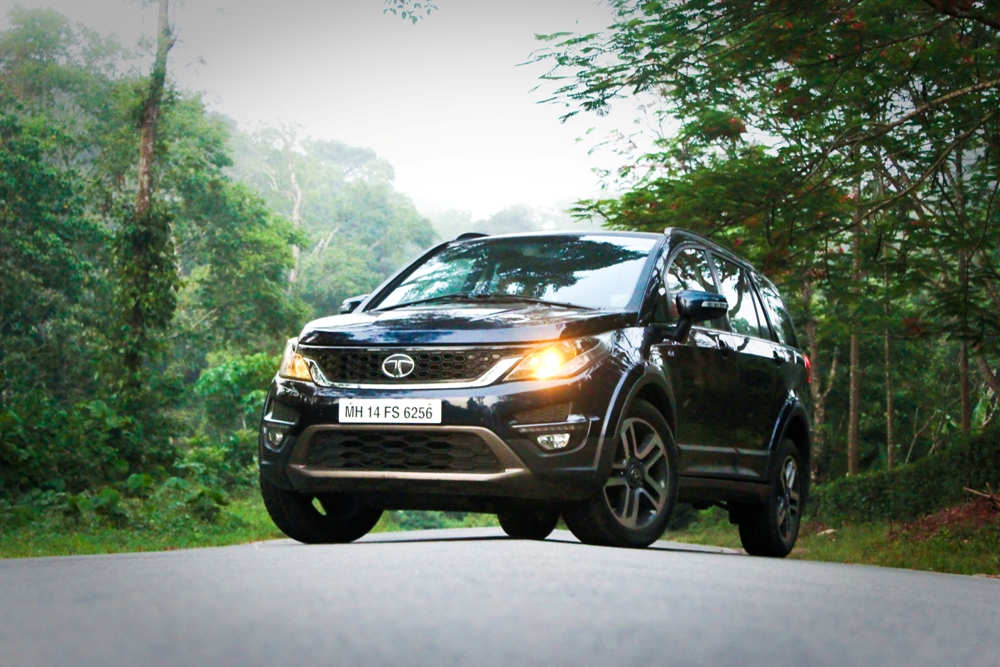


















![India Auto Roundup: Maruti Suzuki, Mahindra have exciting launches in November [details here]](https://data1.ibtimes.co.in/en/full/805520/india-auto-roundup-maruti-suzuki-mahindra-have-exciting-launches-november-details-here.jpg?w=220&h=135)